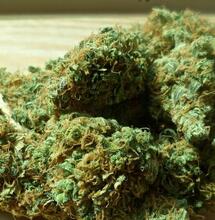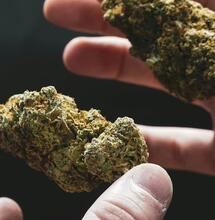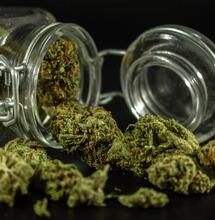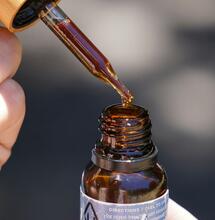Study: Cannabis Use and Physical Health

It's one of the more intriguing studies related to cannabis in a while. To explore the link between cannabis use and physical health, a team of researchers through the University of Colorado Boulder reached out to 677 individual twins or 308 pairs of twins. They looked at the correlation between cannabis use and exercise, heart rate, blood pressure, chronic pain frequency, diet, and more, in participants aged 25-35. This is an ongoing study, and results so far show that mild cannabis use, such as once a week, is not associated with any detrimental physical effects. Study authors further suggest that it may transpire that some people are genetically predisposed to use weed and at the same time predisposed to exercise less or to lose their appetite more often.
Cannabis use is increasing. The list of U.S. states rejecting the federal ban is growing yearly. At the same time, cannabis widespread use triggers the interest for more scientific research. While most research efforts look for the effects of cannabis on separate bodily systems, such as cardiovascular or pulmonary function, the Colorado study primarily focuses on physical health.
The study, issued in the journal Drug and Alcohol Dependence, examines the correlation between cannabis and exercise, heart rate, and appetite loss, among other things. Some of the highlights? Research results say that families with more significant use of cannabis exercised less and had more frequent appetite loss. Within-twin pair differences in cannabis use were linked with a lower heart rate. Nevertheless, cannabis use was not associated with any serious physical health problems.
Researchers relied on various tools for measurements and analysis, including behavioral and health assessment, analysis of environmental settings, biomarkers, and genotype data. They were also able to evaluate the association of cognitive changes with possible physical and behavioral health precursors and track down the emergence of these associations.
The team has focused both on monozygotic twins who share 100% of the same genetic makeup and dizygotic twins who share 50% of their genetic makeup. Such a co-twin design allowed researchers to control the shared genetic and environmental factors upon making their examinations.
Participants of the study were asked to self-report how often they used cannabis but also how often they used other substances such as tobacco and alcohol. They answered three assessments, including use during their adolescence, young adulthood, and adulthood. For each respondent, it was calculated their average lifetime frequency of cannabis use by taking into account the average number of days in the past month that they had used cannabis across the three assessments.
The participants' health functioning was assessed by research staff at the adult assessments only. Measurements included heart rate, blood pressure, and pulmonary function. Respondents were also asked to report other health measurements such as chronic pains, headaches, difficulty breathing, nausea, and injuries. They were also asked how often they ate healthy and unhealthy food and whether they exercised within the past 24 hours.
Researchers considered both between-family and within-family effects in their analysis. Between-family effects were evaluated by averaging the cannabis frequency within each twin pair and comparing these averages across twin pairs. Within-family effects were assessed by looking at a twin's deviations from the average cannabis frequency within their pair.
At the between-family level, greater use of pot in adolescence was linked with less frequent exercise in adulthood, while more cannabis use in adulthood was associated with more frequent appetite loss. The same effects were not observed at the within-family level, however. The findings imply that the effects were driven at least partially by genetic factors within twin pairs and not causally related to cannabis use.
"We examined whether cannabis frequency is associated with physical health outcomes phenotypically and after controlling for shared genetic and environmental factors via a longitudinal co-twin control design," one of the study authors, Jessica Megan Ross, told PsyPost.
Ross, an assistant professor at the University of Colorado Anschutz Medical Campus, added: "We also conducted the exact same analyses with tobacco frequency and physical health to provide a comparison. In general, the results of this study do not support a causal association between using cannabis once a week (the mean cannabis frequency of the sample in adulthood) and detrimental health effects of individuals aged 25-35."
Ross said that the study included 25 different physical health outcomes in total, including body mass, pulmonary function, cardiovascular function, frequency of chronic pain, diet, and hand grip, and added that, "The results for cannabis use contrast markedly with those for tobacco use in the current study, which were consistently associated with worse physical health."
The researcher emphasized that the study still had certain limitations. The results do not encompass feedback from individuals who use cannabis on a more frequent basis. Also, the findings may not generalize to the greater US population in terms of both age and health consciousness. For example, the prevalence of obesity in the study group was much lower than the national average.
"It is important to note that we do not suggest that cannabis is safe for everyone to use," Ross said. "Although we did not find that cannabis use (once a week) is associated with detrimental physical health effects, people can still develop other negative outcomes from use like a cannabis use disorder."














